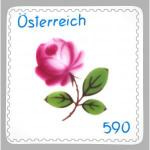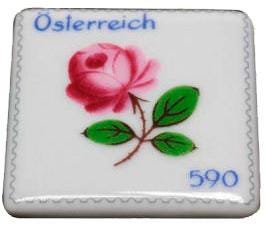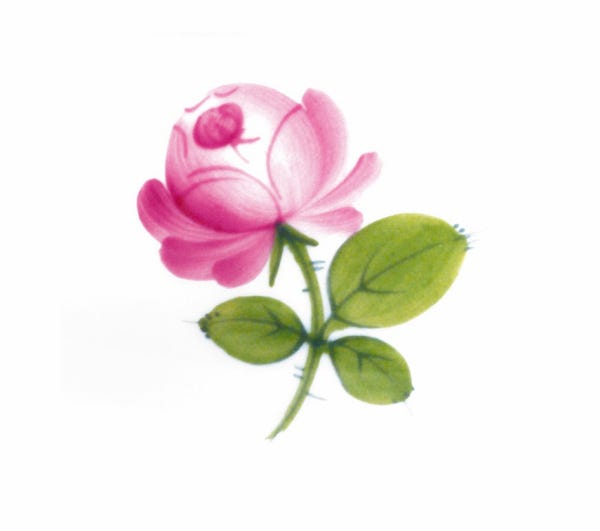World’s 1st porcelain stamp


On March 20, 2014, Austrian Post issued the world’s first postage stamp made of porcelain – Augarten Porcelain – called the “Viennese Rose”. The stamps were designed by the Vienna Porcelain Manufactory Augarten (Wiener Porzellanmanufaktur Augarten), Europe’s second porcelain manufactory.
Production
The stamps were not made using traditional mould casts since a large number of them were to be made; instead, they were made using a ‘rotational mass’ or press method. Next came the firing process. The 1st firing – biscuit firing – is carried out at 960 degrees Celsius for 24 hours. The object is glazed before the second main firing occurs. Later, the Viennese Rose design is screen printed onto the stamps. The stamps then undergo muffle firings of 820 degrees Celsius for the colors to fuse with the glaze. [Source]
Tradition

Augarten porcelain has a tradition dating back ~300 years. According to the Vienna Porcelain Manufactory Augarten’s website:
“In 1718, Claudius Innocentius du Paquier completed a risky mission to bring the closely guarded secret of how to make porcelain to Vienna. In recognition of his achievements, Emperor Karl VI granted him the special privilege of being Vienna’s sole porcelain producer. This is how Europe’s second porcelain manufactory (the 1st one was in Meissen) came to be founded in Vienna in the street which is today known as ‘Porzellangasse’.”
It all sounds somewhat dramatic. One can only imagine how ‘risky’ the ‘mission’ was. The lack of elaboration could also hint at Claudius Innocentius perhaps not being very innocent himself. A press statement by the Metropolitan Museum of Art states that “du Paquier enlisted a worker from the Meissen factory in Germany to help him produce porcelain in Vienna.” [Source]
Although the secret of making porcelain by combining local clays containing kaolin with ground alabaster was jealously guarded by the Meissen manufactory, du Paquier used his diplomatic connections to lure several key figures from Germany to Austria. These included Christoph Conrad Hunger, a porcelain painter; Just Friedrich Tiemann, an expert in kiln construction; and Samuel Stöltzel, the Meissen kiln master, who brought with him the formula for porcelain paste. [Source]
In 1744 — 26 years after founding his porcelain manufactory — du Paquier, burdened by debt, sold the enterprise to Maria Theresa, the future empress of Austria. Since then, every Augarten porcelain has borne the blue-striped shield or “Beehive” from the coat of arms of the Dukes of Austria underneath the glaze to confirm its authenticity. Throughout history, the Augarten porcelain has evolved from its famed Baroque style to Classicism, Art Déco, and its Modern style today, with the famous Viennese Purple Rose surfacing during the Biedermeier era.

Sources:
http://www.augarten.at/tradition/
http://www.rauantiques.com/library/meissen–the-allure-of-continental-porcelain-506.html

